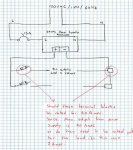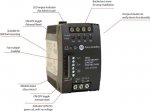lpena
Member
- Location
- United States
This may seem like a very basic question, but I just need to hear from other users about the correct way to use terminal blocks. Basically you select terminal blocks based on the voltage rating and amps. Well i have 24VDC circuits that are derived from a 24VDC power supply (see attached). The power supply has a max. output of 40 Amps or 960 Watts. I would like to fuse each 24VDC circuit/loads. I plan to use fuse terminal blocks such as Weidmuller WSI 6 LD. But looking at the datasheet of the terminal block, it says that it has a current rating of 6.3 Amps. The load is about 2 Amps. So that should be no problem, but should i also consider that the power supply has a max current of 40 Amps? Please advise. Thanks



